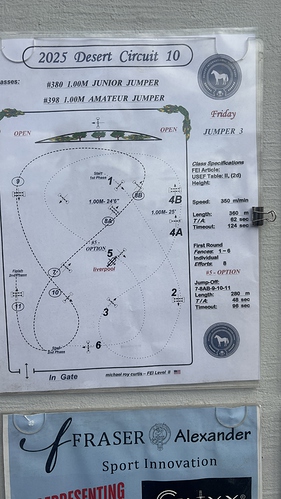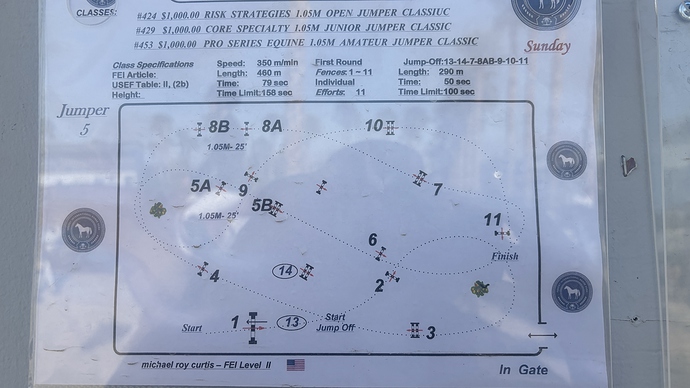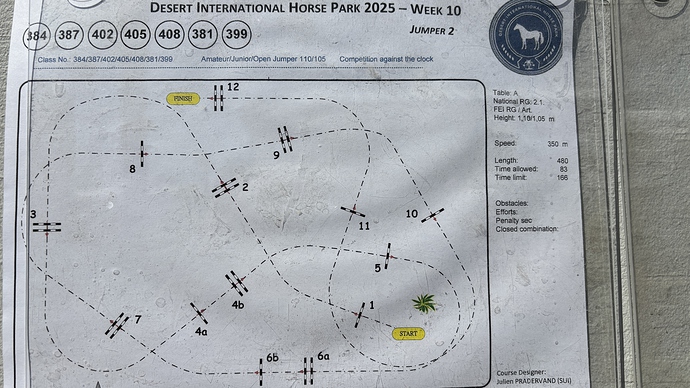As someone said, those are the class numbers. The first course designer provided the full names of the classes whereas the other one gave the class numbers and then a brief version of the class name. In the second instance there are more classes because the same course was used for all of the junior and amateur meter classes and 1.1-m classes. The meter classes are sometimes specified as 1.0-1.05 m but it’s easier to say meter. You can translate a bit better if you have the premium since the class numbers are likely to be different from show series to show series, but might very well be the same across an entire show series, as is the case for the courses I posted. The premium will also give you an idea of what sort of classes are offered. Here’s a link to the premium for the show series from which I posted the courses: https://deserthorsepark.com/wp-content/uploads/2025/02/DIHP-DC25-2-14-2025.pdf
More generally, the class names at USEF shows mostly include the height of the fences. I think that the USEF/USHJA designations start at a meter for the junior and amateur classes, so you’d have 1.0-m amateur jumpers, 1.1-m amateur jumpers, 1.2-m amateur jumpers and so on. It used to be highly confusing to anyone without the secret decoder ring bc the order in increasing height went Low Adult Amateurs, High Adult Amateurs, Low Amateurs, and High Amateurs. The class names for the open classes also include the height, so 1.3-m open or 90 cm open, except maybe for some special classes (including Young Jumpers?) where you’d have to look at the description or just know it. Likewise, classes lower than a meter now just have the height in the description, so 90-cm open and 80-cm non-pro.
If you’re curious about the difference between non-pro vs junior or amateur it has to do with classes a rider can cross-enter. For example, you can’t cross enter the meter adult jumpers with the 1.3 m adults, but there are no cross-entry restrictions for the meter (or 90 or 80 cm) non-pro classes.
I know that Europe has the letter designations for various heights in jumpers and levels in dressage but I always have to look that up.




